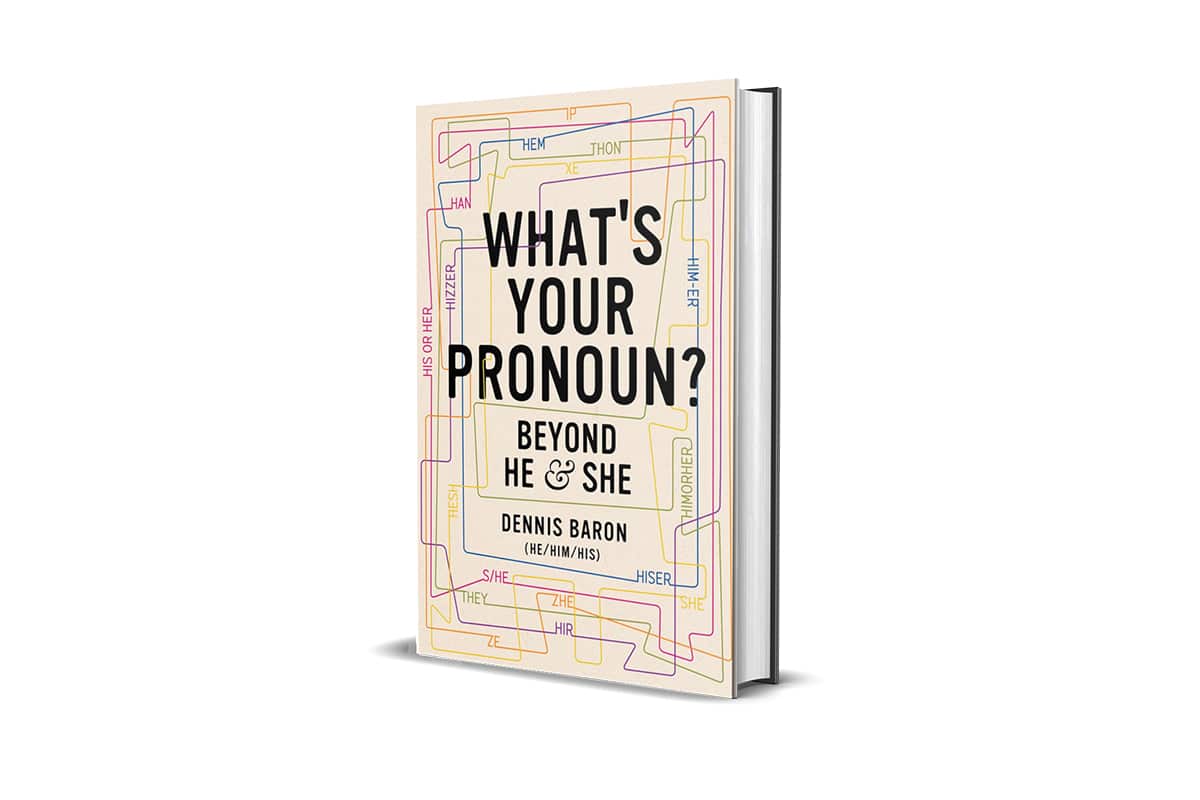Genre: Social Science
By
Hardcover | 304 pp. | Liveright | 21/01/2020 | 1st edition
Buy on Amazon
What’s Your Pronoun is definitely pretty different from the other book I’ve so far reviewed here on this blog. Let’s start from the author: Dennis Baron is professor of English and linguistics at the University of Illinois and has written several books on the technologies of communication, language policy, language legislation and the history and present state of the English language. He appears on twitter as @DrGrammar, an alias that explains pretty well his focus. He’s also the author of the blog The Web of Language, where he discusses several topics on the English language.
Linguistic is a piece of human knowledge that always fascinated me. The idea of spending time to study one or more words, its origins, the social and political impact of it, has ever brought a profound appeal, despite sometimes the tendency to think of it as superfluous. But we know how important language is to express ourselves. At the same time, as a non-native English speaker (one of those that practices that version of English that some have labelled “international English”, to ensure we can go away with the occasional misusage of phrasal verbs and other weird constructs of this too simple language), I’ve always been a bit scared of being confronted with this topic. Too much reminiscent of the grammar lessons of each of the languages I studied.
What’s Your Pronoun made me genuinely appreciate this field of human science again. The book narrates the history of the quest of the English language to find a non-gender specific pronoun for the third singular person. In a language where all nouns are missing an assigned gender, gender-specific pronouns are used to indicate mainly only people. But what to do when we refer to a person, but we don’t want to specify the gender?
The author examines different ways that have been applied in history to tackle this issue (each one is analysed in a specific chapter):
- Usage of generic “He”. Seemingly the preferred option by English grammar’s purists (and somehow aligned also with other languages), this usage has however delivered many issues in history. The book is full of interesting examples, and somewhat amusing anecdotes, on the interpretation of the generic he in legislation. Up to the point that the appearance of “he” was intended as including both a man or a woman in criminal law, but was limited to the only male gender when opposing suffragettes claim of the vote for women. A glimpse of the fact that language has a secure connection with politics. The author also examines the usage of “it” and “she” as generics, but both still pose a series of problems.
- Usage of he/she: All the different forms of he/she, he and she, she and he and so on pose problems of style, and are particularly unsuitable to be inclusive in an age where the concept of gender expanded to non-binary options.
- Usage of the singular “They”. Somewhat an artefact, but pretty standard in English usage by many authors, and, to my surprise, not just in recent time. Many notable English writers have advocated for the usage of a singular They. Yet there is not (yet) full agreement on this. Recent developments in individual choice of pronouns have given some more flexibility, but more in the sense of accepting personal preference rather than making this a generally accepted rule.
- Inventions: the book has an appendix with several dozens of options of invented alternatives by different authors and writers. Reading that part is an interesting aspect of how much focus and need there is to find a solution.
But why is this topic so relevant? Legislators have discussed it, universities and other institutions have written about it in their regulations, style manuals have addressed the problem…
- There are moments in which you don’t want to disclose the gender of a person for confidential reasons.
- There is a question of “respect” for the individual gender that a generic masculine would not address.
- It’s a question of precision, especially in legal texts, and inclusiveness.
- More and more, it’s also a question of inclusion of non-binary gender expressions.
The need to concealing gender has many other reasons as well; this is just a summary. What’s interesting is that a seemingly linguistic narrow issue has so much reach. The amount of political mentions in the book, also from far away in history, shows really how big this issue is.
And this is not just in the wake of the current trend for some organisation to apply inclusion and diversity principles in allowing individuals to choose their own pronoun. Something that might not always be understandable from the perspective of a mother-tongue speaker of another language. But that this book shows how imperative it is, in respecting the sense of belonging of the individual within an organisation.
To conclude, What’s Your Pronoun sheds a different point of view on the importance and relevance of how we use a language. It allows us to understand how words are a powerful tool for sense-making of individuals and not just as a question to be more transparent and more precise. What’s Your Pronoun? is a thoroughly enjoyable read, with soo much detail, but an excellent guide in not getting lost by the author.
For sure the fact that the English language is spoken in so many different countries, without a central authority certifying the “purity” of the language, will ensure that the debate will continue still for much time.

Genre: Social Science | Rating: 4/5
Hardcover | 304 pp. | Liveright | 21/01/2020 | 1st edition
ISBN: 9781631496042
Buy on Amazon
